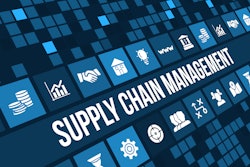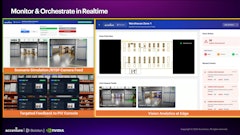
While global supply chain disruptions dominate headlines – from Houthi attacks forcing vessels to abandon Red Sea routes to drought conditions limiting Panama Canal capacity – it's often the localized disruptions that pose the most immediate threat to business operations. A warehouse fire, regional flooding, software shutdown or transport union strike can cascade through supply networks with devastating speed, leaving businesses scrambling to maintain service levels. Advance warning on disruptions can vary, but the smartest companies use data and technology to find ways to continue serving customers even as a crisis unfolds.
Smart data helps prevent large-scale disruption before it hits
The best way to handle a supply chain crisis is to stop it from happening in the first place. That might sound obvious, but with modern data analytics, it's becoming increasingly possible.
Natural disasters frequently disrupt supply chains, causing significant challenges. You needn’t look further than the California fires. In these moments of crisis, forward-thinking businesses are leveraging predictive data to make informed, real-time decisions about shipments already in transit. This proactive approach minimizes delays while also ensuring the resilience of supply chains during challenging circumstances.
A practical example would be to halt shipments before they arrive at a disruption, instead of sending trucks into flood zones or fire-threatened areas, where goods will inevitably be returned. This approach goes beyond minimizing financial losses; it’s about anticipating where displaced customers will go next and ensuring they have swift and efficient access to essential goods.
Some of the world’s largest retail chains are already putting this strategy into action. When severe weather events are imminent, they don’t simply stop deliveries to impacted areas. Instead, they rapidly increase supplies of critical items in surrounding regions where displaced residents are likely to seek refuge. This forward-thinking approach helps prevent communities from experiencing a compounded crisis: the immediate effects of the disaster followed by the scarcity of basic necessities.
The second key to surviving disruption is having flexible distribution networks. Order management systems provide the practical ability to pull orders back, re-route shipments, and quickly change where stock is being sourced.
The COVID-19 pandemic demonstrated the importance of having this flexibility. Companies that could easily move stock between warehouses and quickly change delivery routes cashed in on the increased demand, leaving those who couldn’t adapt struggling. The difference wasn't just about having multiple warehouses – it was about having systems that could promptly redirect orders across the entire network.
By decreasing dependence on a single source of inventory, businesses can mitigate risk and unlock a supply chain that can maneuver around disruption, whatever it may be.
When technology itself becomes the problem
Despite all the benefits of modern supply chain technology, sometimes it's the technology itself that fails. Software outages and data center problems can shut down operations just as effectively as a flood or fire. Having a backup plan isn't enough – businesses need to know exactly how long it will take to get systems running again and what data might be affected.
This is a critical area where many companies falter. While technology providers offer disaster recovery services, too few businesses take the crucial step of actively testing them. It’s similar to having an emergency evacuation plan but never conducting a fire drill, you can’t be confident it will work when it truly matters. Businesses must go beyond simply having a plan; they need to verify its effectiveness and gain a clear understanding of how long recovery will take in a real-world scenario.
The final piece of the puzzle is managing disruptions that hit suppliers. When a key supplier suddenly can't deliver, businesses need to know their options – whether that is alternative suppliers or substitute products for items they've promised to keep in stock.
But there's a hidden technical challenge that often catches companies off guard. Many modern inventory systems use algorithms to predict demand and automate ordering. Sophisticated demand prediction systems struggle when historical sales data shows zeros, potentially perpetuating stockouts even after supply becomes available. Organizations need mechanisms to "kickstart" their inventory systems, pushing stock back into the pipeline rather than letting automated systems perpetuate the shortage.
Looking ahead
As supply chains grow increasingly complex, effectively using data to predict and prevent disruptions is no longer a convenience or a luxury—it’s a necessity for survival. Businesses that manage disruptions most successfully aren’t always those with the most advanced technology. Instead, they are the ones that apply data and systems in practical ways, make swift decisions when challenges arise, and have well-defined plans to restore operations quickly after disruptions occur.




















